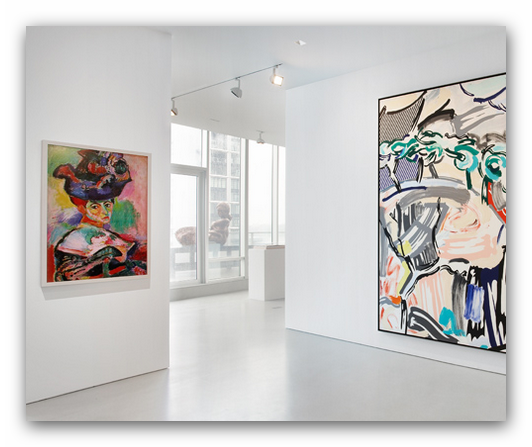Jan 19 2017 - May 13 2017
New York City, NY
The exhibition initiates a conversation between two masters of contemporary painting, from the vastly different backgrounds of Beirut and Germany. Both artists continue to challenge the concept of working in a single style or media, translating their explosive color abstractions and painting processes to canvas, ceramic, glass, and tapestry.
Etel Adnan (b. 1925 in Beirut, Lebanon, and lives between California and France) is an award-winning author, playwright, poet, and visual artist, who, in the tradition of the Dadaists and Surrealists, moves fluidly between writing and art making. “It’s so rare that you have someone making such important contributions to poetry and art,” says Hans Ulrich Obrist, “Etel is one of the most influential artists of the 21st century.” Adnan’s abstract paintings were largely overlooked until later in her life. These works recall time, nature, shadow and light, and most essentially, her relationship to place. Featured works in the exhibition are two recent hand-woven tapestries created in collaboration with Atelier Pinton Aubusson – Feux d’Artifice, 2014, and L’etang Fleuri, 2016 – both of which translate Adnan’s precise, almost topographical painting technique into the lush, yet systematic medium of tapestry.
An additional work, Le Soleil amoureux de la lune, 2014, consists of 12 intimately-scaled ceramic panels, each depicting a different phase of the solar and lunar cycle. Recognizable, yet abstract, this dreamlike series highlights the artist’s bold, expressionist use of color, line, and gesture. Adnan believes collaborations are not just between people, saying: “We have to give credit to materials. They’re not just objects. They work with us and we work with them. They give us their energy and possibilities.”
Gerhard Richter (b. 1932, Dresden, Germany, and lives in Cologne, Germany), is often lauded as the greatest artist working today with a prolific career spanning six decades. Richter has mastered multiple styles and genres of painting, with contributions to pop art, minimalism, neo-expressionism, photo-realism, and abstraction through portraiture, landscape, and still-life. In recent years, Richter’s interests in merging media and appropriation have resulted in works that transform his own paintings into a range of forms, exploring the process of painting through digital techniques.
Richter’s Abstract Painting (724-4), 1990, exemplifies the artist’s approach to non-representational painting and serves as the source for the tapestries Musa and Yusuf (both 2009). The composition of each tapestry takes its imagery from one quadrant of the original painting, which is then flipped and multiplied to create a kaleidoscopic, Rorschach-like effect. Though derived from the same painting, the mechanized process of the jacquard loom gives each tapestry a unique color scheme and compresses Richter’s signature scrapes and layered compositions, creating a form in between painting and photography.
Sinbad, 2008, highlights Richter as a master colorist and is his first series to allude to The Book of One Thousand and One Nights (Arabian Nights). The 98, small autonomous works, created in reverse on glass and arranged into 49 diptych pairs, explore the effects of chance and abstraction. Richter stated: “It’s not that I’m always thinking about how to make something timeless, it’s more of a desire to maintain a certain artistic quality that moves us, that goes beyond what we are, and that is, in that sense, timeless.”
Exhibition Venues & Dates
Jan 19 2017 - May 13 2017
New York City, NY
